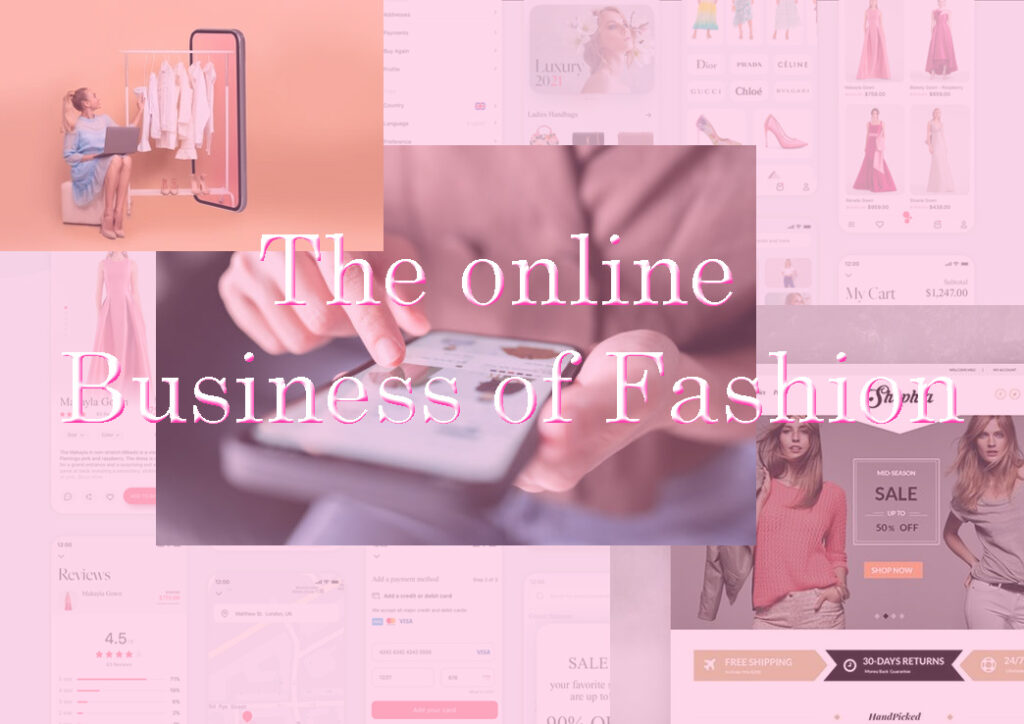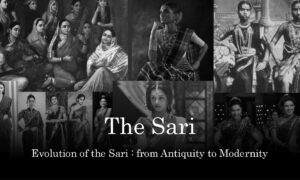The 8 points fashion industry and e-commerce : how online business markets are reshaping the fashion retail
Introduction
The 8 points fashion industry and e-commerce will be a study of the aspect of digitization that is reshaping the way we look at the retail business models. The fashion industry, known for its ever-changing trends and dynamic nature, has witnessed a significant transformation in recent years with the burgeoning influence of e-commerce. This blog will dive deep into the evolution of the e-commerce platform in the fashion industry.
Not only digitization of the fashion marketplace has given more power to the user, but it has also given new opportunities to brands to approach the user. Simultaneously, the internet revolution has amped up the big players of the fashion industry and also empowered the small scale retailers to interact with the consumer directly and innovatively. As we take a closer look at the historical development of this intersection between fashion and online retail, we will explore key dates, anecdotes, milestones, and the pivotal role played by industry visionaries.
I. The Genesis: Early Digital Footprints (1990s-2000s)
The advent of the internet in the 1990s marked the first steps towards the digitalization of the fashion industry. As the world of retails selling and online business markets were expanding horizons, brands began experimenting with online catalogs, allowing customers to browse collections from the comfort of their homes. This gave the end user a new sense of freedom and empowerment of accessing global fashion at the click of a button. In 1999, the iconic fashion designer Ralph Lauren created history when he launched his e-commerce website, setting a precedent for luxury brands to embrace the online realm of e-selling.
During this period, not only the fashion business grew but simultaneously other fashion forums like online magazines and blogs gained traction, creating a platform for fashion enthusiasts to share insights and opinions. The democratization of fashion discourse was underway, laying the groundwork for the broader democratization of fashion consumption.
II. The Rise of Online Retail Giants (Mid-2000s)
The mid-2000s witnessed the rise of e-commerce giants like Amazon and eBay, providing a platform not only for books and electronics but also for fashion. These platforms revolutionized the shopping experience, allowing consumers to explore a vast array of brands and styles with just a few clicks. This completely changes how the common man gained access to fashion. This was a great leveler of sorts where all levels of players big or small had visibility. As things advanced, more complex options of marketing like paid promotions were provided for sellers of types to find and target their nice audience.
In 1995, the launch of world’s first fashion website ‘Fashion Net’ from Paris, France, an online portal for fashion professionals, further demonstrated the industry’s digital shift. As more designers and retailers embraced e-commerce, the fashion landscape became more accessible to a global audience. As it further reduced the time that fashion reached the masses.
III. The Social Media Revolution (2010s)
The 2010s marked a turning point with the integration of social media into the fashion e-commerce landscape. Platforms like Instagram, Pinterest, and later TikTok became powerful tools for brands to showcase their products, engage with customers, and tap into new markets. This was the age of the rise of fashion influencers.
In 2010, the creation of Instagram paved the way for a visual-centric approach to fashion marketing. Influencers, individuals with significant online followings, emerged as key players in shaping consumer preferences. Brands began collaborating with influencers to reach wider audiences and establish a more personal connection with consumers.
IV. The Birth of Direct-to-Consumer (DTC) Brands (2010s)
Simultaneously, the 2010s witnessed the rise of direct-to-consumer (DTC) brands, disrupting traditional retail models. By cutting out intermediaries, DTC brands could offer quality products at competitive prices, attracting a digitally savvy consumer base.
In 2010, Warby Parker, an eyewear company, exemplified the success of the DTC model. The brand’s online-first strategy and commitment to social responsibility resonated with consumers, challenging the dominance of established eyewear retailers. This success inspired a wave of DTC fashion brands to emerge, fundamentally altering the fashion retail landscape.
V. Technological Innovations and Augmented Reality (AR) (2010s-2020s)
Technological innovations continued to reshape the fashion e-commerce landscape. Augmented Reality (AR) emerged as a game-changer, offering customers the ability to virtually try on clothing and accessories before making a purchase.
In 2016, the launch of Pokémon Go brought AR into the mainstream, paving the way for its integration into various industries, including fashion. Brands like Gucci and Adidas incorporated AR into their apps, allowing users to virtually try on shoes or accessories using their smartphones. This immersive shopping experience not only enhanced customer engagement but also reduced the uncertainty associated with online shopping.
VI. Fashion Weeks Go Digital (2020s)
The COVID-19 pandemic, while presenting unprecedented challenges, accelerated the digital transformation of the fashion industry. With traditional fashion shows and events canceled or limited, designers and fashion houses turned to digital platforms to showcase their collections.
In 2020, London Fashion Week went fully digital, embracing virtual runway shows and live-streamed events. This shift not only allowed for broader audience reach but also prompted designers to rethink the traditional fashion calendar. The digitalization of fashion weeks highlighted the industry’s adaptability and the growing importance of online platforms in shaping trends and consumer behavior.
VII. Fashion and AI (2020s)
The 2020s witnessed a transformative synergy between the fashion industry and artificial intelligence (AI), marking a paradigm shift in the way trends were identified, designs were created, and consumer experiences were enhanced. AI became an indispensable tool, influencing every aspect of the fashion ecosystem.
One of the prominent applications of AI in fashion was trend forecasting. Machine learning algorithms analyzed vast amounts of data from social media, fashion blogs, and historical trends to predict the next big thing. This not only streamlined the creative process for designers but also helped retailers anticipate consumer preferences, reducing waste and optimizing inventory management.
The design process itself underwent a revolution, with AI playing a crucial role in generating innovative and personalized designs. Designers collaborated with AI algorithms, using them to suggest patterns, colors, and styles based on historical data and current trends. This fusion of human creativity and machine intelligence resulted in unique and avant-garde fashion pieces that catered to individual tastes.
In retail, AI-powered virtual assistants and chatbots reshaped the customer experience. Personalized shopping recommendations, virtual try-ons, and size recommendations became commonplace, enhancing user engagement and satisfaction. AI-driven algorithms analyzed customer behavior and preferences to curate customized shopping experiences, fostering brand loyalty.
Sustainability also became a focal point, and AI played a pivotal role in optimizing supply chains, reducing waste, and promoting ethical practices. Predictive analytics helped identify environmentally friendly materials, and AI algorithms optimized production processes to minimize ecological impact.
VIII. Sustainability and Ethical Practices (2020s)
As e-commerce in the fashion industry continues to grow, there is a heightened focus on sustainability and ethical practices. Consumers, now armed with information and a sense of social responsibility, demand transparency from brands regarding their supply chains and environmental impact.
In 2021, the fashion industry witnessed a milestone as Gucci announced its plan to become carbon neutral and eliminate the use of hazardous chemicals by 2020. This commitment underscored the evolving priorities within the industry, with sustainability becoming a key factor in consumer decision-making.

Conclusion
The growing influence of e-commerce in the fashion industry represents a remarkable journey from the early digital footprints of the 1990s to the immersive and tech-driven experiences of the 2020s. As the fashion landscape continues to evolve, businesses are adapting to the online retail realm by embracing technology, leveraging social media, and prioritizing sustainability.
In this digital era, the fashion industry stands at the intersection of creativity and technology, where the runway extends beyond physical spaces, and consumers have unprecedented access to global trends. The future promises further innovation and collaboration, as the fashion industry continues to redefine itself in the digital age.





























Pingback: Lulu Guiness : A Very Quirky British Accessory Designer In 5
Pingback: Most Beautiful Kani Shawls Of Kashmir In 5 Mins
Pingback: 10 Most Popular Fashion Books
Pingback: 10 Best Design Software For Fashion Designers